Choosing the right Software Custom vs. Off-the-Shelf is a critical decision for businesses of all sizes. Software impacts everything from day-to-day operations and customer interactions to long-term scalability and profitability. Organizations often face the choice between off-the-shelf software, which is ready-made and widely available, and custom-built software, tailored to meet specific business needs.
Both options come with unique advantages, drawbacks, and costs, making it essential to assess them carefully to determine the best fit for your organization.
This detailed guide breaks down the key differences between custom and off-the-shelf software, their respective pros and cons, costs, use cases, and factors to consider when making your decision.
Software Solutions Custom vs. Off-the-Shelf
Software solutions are essential for business success in today’s fast-paced digital world. From streamlining operations to enhancing customer experiences, the right software can be a game-changer. However, not all businesses have the same needs. While some require ready-to-use, widely applicable software, others benefit from bespoke solutions tailored to their workflows.
Software Solutions Custom vs. Off-the-Shelf: The Importance of Choosing the Right Software
- Operational Efficiency: The right software minimizes inefficiencies, automates tasks, and ensures smooth workflows.
- Cost-Effectiveness: Poor software decisions can result in wasted money, resources, and opportunities.
- Scalability and Growth: The chosen solution should align with your business’s growth trajectory.
1. Understanding Off-the-Shelf Software
Off-the-shelf software is pre-designed and pre-packaged, offering standard features that cater to a wide range of industries and use cases. It’s ideal for businesses seeking quick deployment and broad functionality without a high upfront cost.
Characteristics of Off-the-Shelf Software
- Mass-Market Appeal: Designed for widespread use across industries.
- Standardized Features: Built with a generic set of tools and capabilities.
- Subscription-Based Models: Often provided as Software-as-a-Service (SaaS), with ongoing licensing fees.
Popular Examples
- Salesforce CRM: Widely used for customer relationship management.
- QuickBooks: Accounting software for small and medium businesses.
- Microsoft 365: Productivity tools for businesses of all sizes.
When to Choose Off-the-Shelf Software
- Startups and small businesses with limited budgets.
- Companies requiring quick implementation with minimal customization.
- Organizations needing standard functionalities like payroll, CRM, or document management.
2. What is Custom Software?
Custom software is purpose-built to address specific business needs. Unlike off-the-shelf solutions, custom software is developed from scratch, ensuring it aligns perfectly with your organization’s unique workflows, goals, and challenges.
Characteristics of Custom Software
- Tailored Design: Built to solve specific business problems.
- Ownership: Businesses own the software, offering complete control over features and updates.
- Long-Term Investment: Higher initial costs but can deliver better ROI over time.
The Custom Development Process
- Discovery Phase: Identifying business needs and defining software requirements.
- Design and Development: Collaborating with developers to create the application.
- Testing and Deployment: Ensuring the software meets all requirements before launching.
When to Choose Custom Software
- Businesses with highly specific or complex workflows.
- Companies requiring unique features that off-the-shelf solutions cannot provide.
- Organizations looking for long-term flexibility and scalability.
3. Pros and Cons of Off-the-Shelf Software
Advantages
- Lower Upfront Costs: Subscription models reduce the financial barrier to entry.
- Quick Deployment: Minimal setup time means you can start using the software immediately.
- Scalability with Add-Ons: Many off-the-shelf tools offer integrations or plugins to expand functionality.
Challenges
- Limited Customization: Features may not align perfectly with your business needs.
- Vendor Dependency: Updates, fixes, and new features are controlled by the vendor.
- Bloatware: Includes unnecessary features that may clutter the interface or slow performance.
4. Advantages and Challenges of Custom Software
Advantages
- Tailored Functionality: Built specifically to match your business requirements.
- Competitive Differentiation: Unique features can set you apart in the market.
- Scalability: Can evolve alongside your business, supporting long-term growth.
Challenges
- Higher Costs: Development, testing, and maintenance require significant investment.
- Longer Development Time: Custom solutions take months to design and deploy.
- Maintenance Responsibility: Businesses are responsible for ongoing updates and bug fixes.
5. Key Considerations in Choosing a Solution
- Budget: Determine how much you’re willing to spend on upfront costs and long-term maintenance.
- Business Needs: Assess whether off-the-shelf solutions meet your specific requirements.
- Timeline: Evaluate how quickly you need the software operational.
- Scalability: Consider how the solution will adapt as your business grows.
6. Cost Analysis: Custom vs. Off-the-Shelf
Custom Software
- Upfront Costs: Higher due to development and deployment.
- Long-Term ROI: Offers better value for businesses that utilize the software heavily.
Off-the-Shelf Software
- Initial Costs: Lower entry costs with subscription-based pricing.
- Hidden Costs: May require additional integrations or workarounds.
7. Integration and Compatibility Software Solutions Custom vs. Off-the-Shelf
Off-the-Shelf Software
- Often includes pre-built integrations with popular tools.
- Examples: Zapier for connecting various SaaS platforms.
Custom Software
- Designed to integrate seamlessly with existing systems, ensuring smooth operations.
8. Scalability for Growing Businesses
- Off-the-Shelf: Limited scalability, often requiring additional licenses or subscriptions.
- Custom Solutions: Scalable by design, evolving with your business needs.
9. Industry-Specific Applications
Examples
- Healthcare: Custom software ensures compliance with regulations like HIPAA.
- Retail: Off-the-shelf POS systems like Square streamline operations for small businesses.
10. Software Solutions Custom and Off-the-Shelf: The Hybrid Approach
A hybrid approach combines the flexibility of custom solutions with the cost-effectiveness of off-the-shelf software.
Conclusion: Software Solutions Custom vs. Off-the-Shelf:
Choosing between custom software and off-the-shelf solutions requires a deep understanding of your business’s needs, budget, and growth trajectory. While off-the-shelf software offers quick implementation and lower costs, custom solutions provide long-term value and tailored functionality.
By assessing your priorities and weighing the benefits of each option, you can select the solution that best positions your business for success.
About Horys
A premier hardware and software solutions company, Horys’ technology is on par with global standards. Its offerings include a variety of hardware products like smartphones, tablets, and computers. And software products include server hosting and management solutions.
Disclaimer: This article combines insights from both human expertise and AI technology to provide informational content. It is for informational purposes only and should not be interpreted as financial advice or a recommendation to invest. Virtual asset investments are inherently volatile and risky. Horys provides no guarantee of accuracy or completeness for the information herein. Independent research and professional advice are recommended before engaging in any investment activity. Horys bears no liability for investment decisions based on this article.



